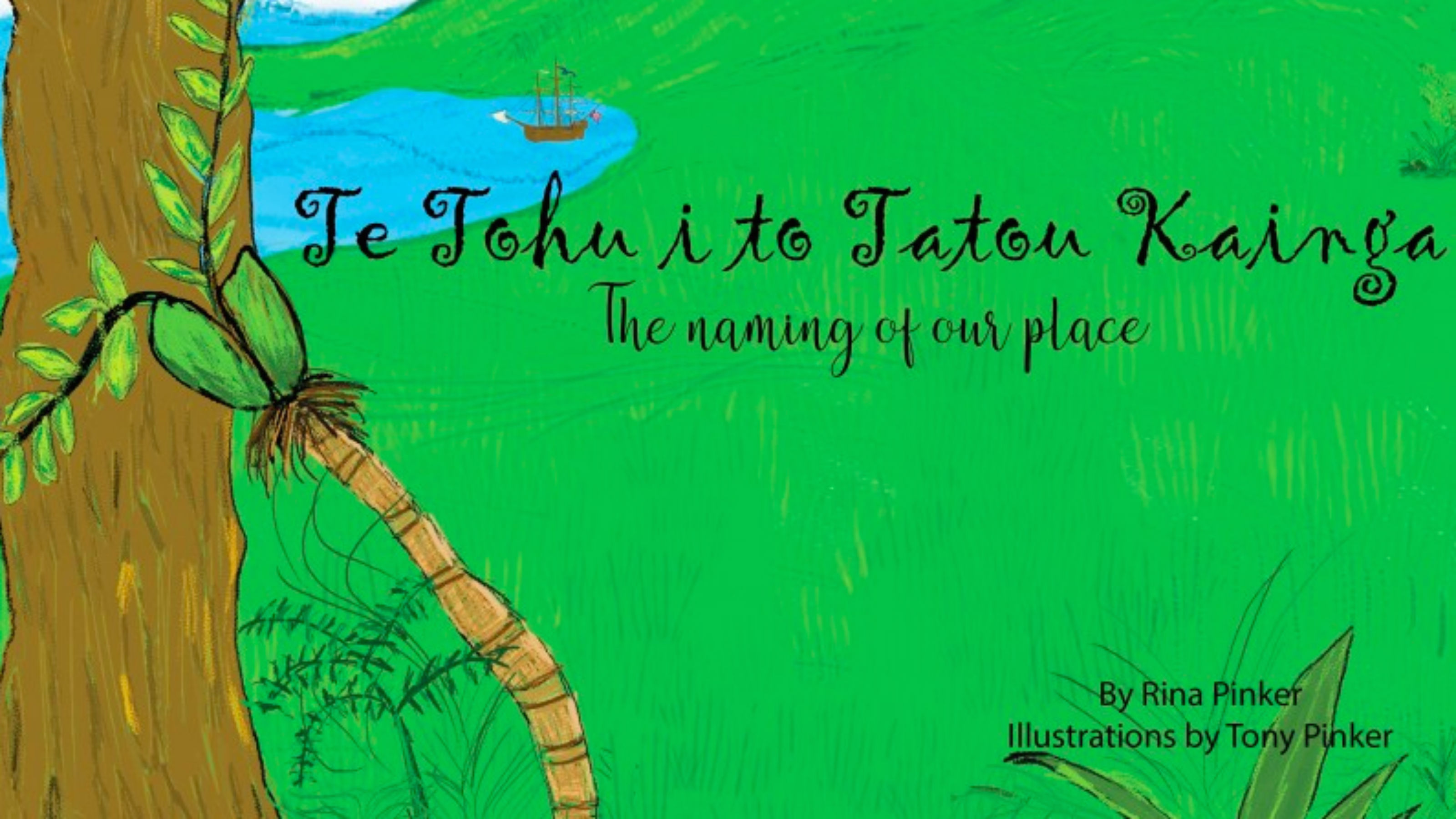Te Tohu i to Tatou Kainga | Reo Pākehā
James Cook and a Tahitian high priest named Tupaia navigated their way to Aotearoa and stumbled on the Motuara Island area now known as Queen Charlotte Sounds.

Written by Rina Pinker.
Historical note by Dr P N Meihana.
Illustrations by Tony Pinker.
James Cook was an explorer who loved to sail the seas. He explored the Pacific Ocean and everywhere in-between claiming land for his king and queen. On his journey, James met a Tahitian high priest and navigator named Tupaia, who spoke many languages. Tupaia offered to assist James on his voyage across the seas.
They landed in Aotearoa, land of the long white cloud. To the top of Motuara Island they climbed—a very important stop. They met Chief Topaa who James told about his wish for the Union Jack atop Motuara Island. Chief Topaa agreed it was a fine spot and spoke of the names of the surrounding area.
James, a man from England, found these names too tricky and boldly suggested a change. Following robust discussion and debate about the names, James declared the area Queen Charlotte Sound as a token for his queen. He also gave other names which became an accepted part of the histories of those area.
Throughout the generations Māori people have never forgotten the ancestors the places were named for every sacred spot. Overtime, as more people learn the Māori language, the traditional Māori names are being revived and used by all New Zealanders.
